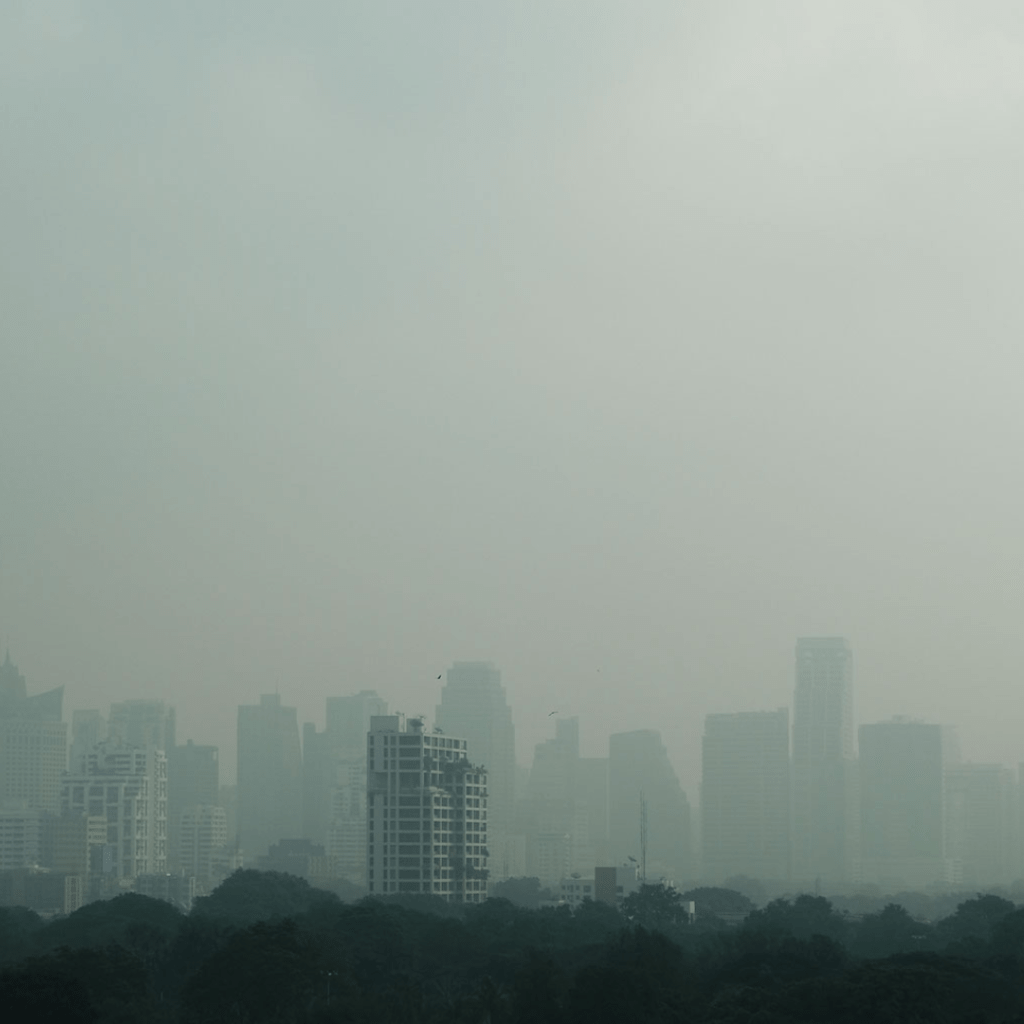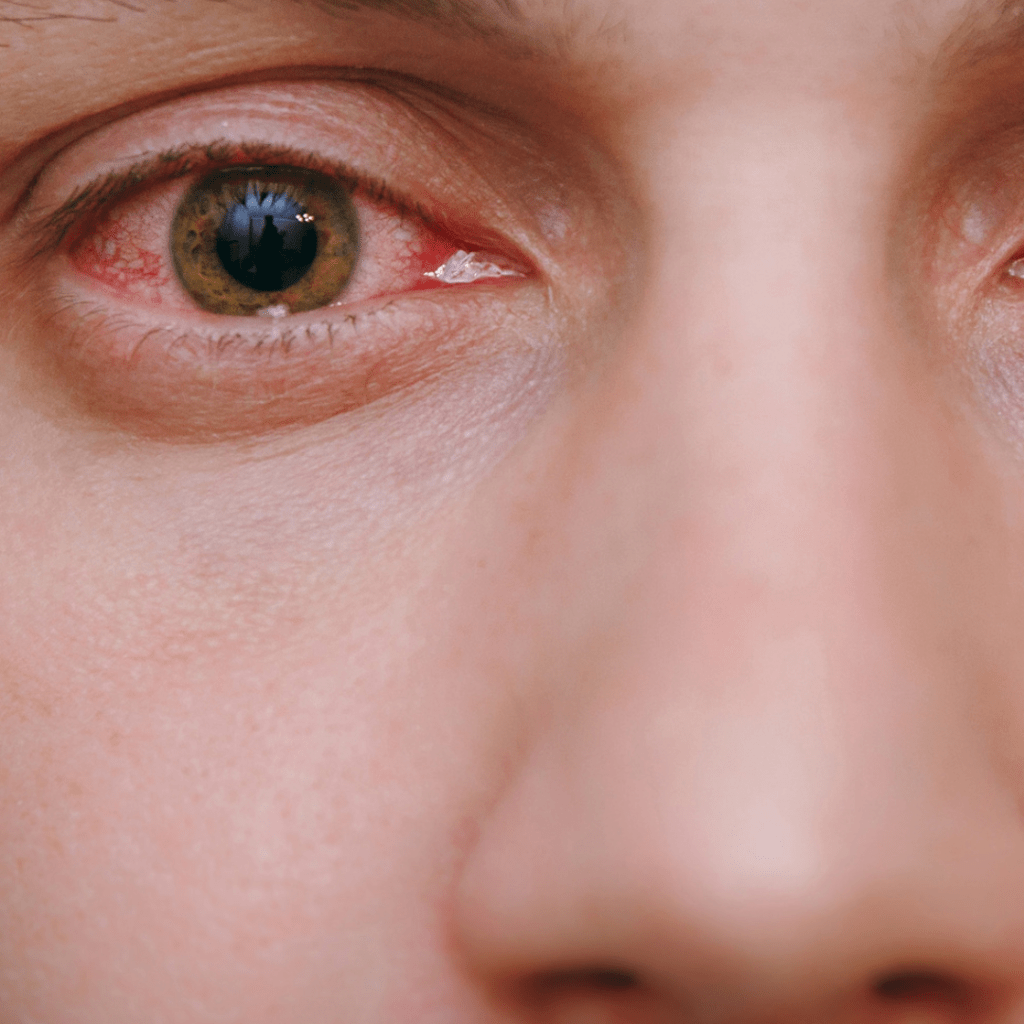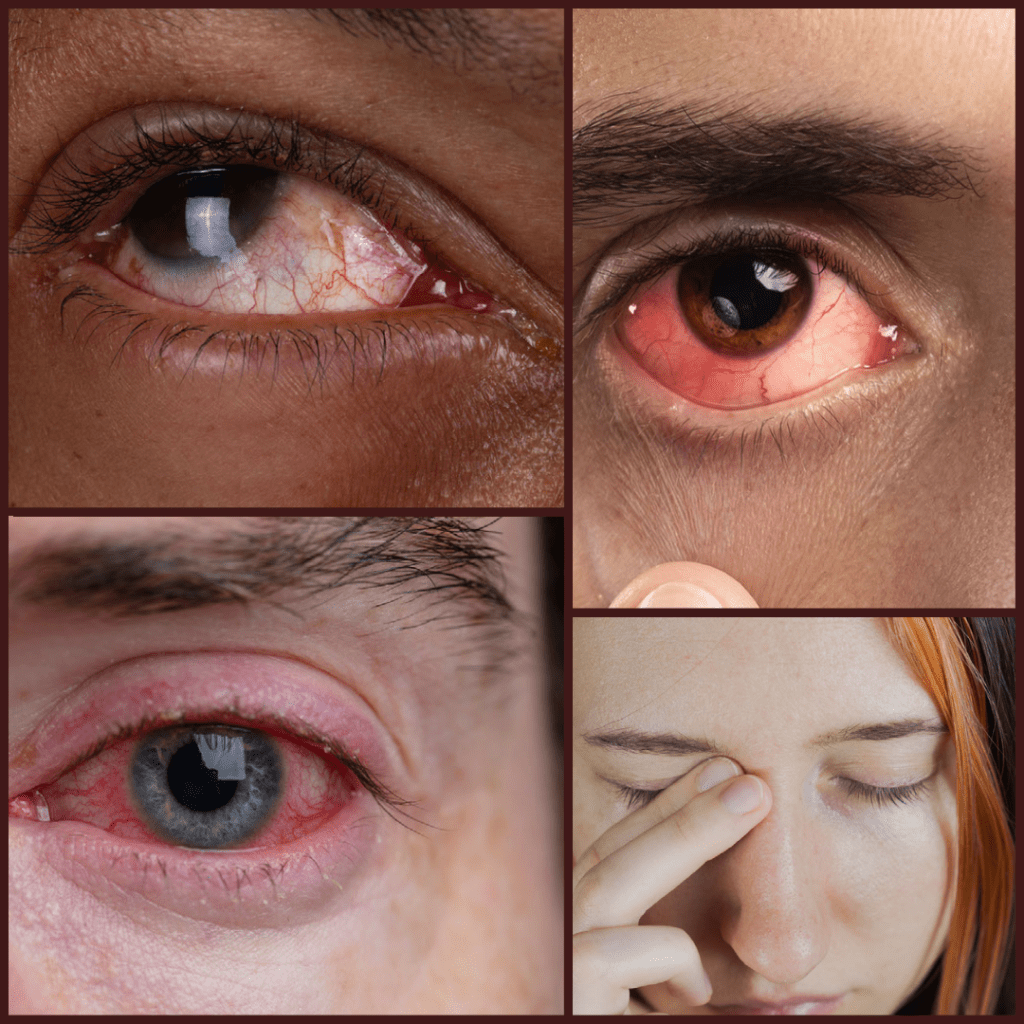The term “air pollution” refers to the contamination of the indoor or outdoor environment by chemicals or other airborne particles that are harmful to human health as well as the health of the planet.
Where do these toxins originate?
The primary sources of particulate matter, nitrogen oxides, carbon dioxides, and other outdoor air pollutants are motor vehicles, industrial facilities, forest fires, and home combustion appliances.

On the other hand, inadequate indoor ventilation, heating, cooking, and tobacco smoking can cause indoor air pollution. Women who cook with burning wood on a stone stove are frequently vulnerable to the negative effects of indoor pollution.
There is a link between air pollution and a variety of eye conditions, such as conjunctivitis, dry eyes, and age-related macular degeneration.
According to WHO data, 99 percent of the world’s population breathes air containing high levels of pollutants that exceeds WHO guideline limits, with low- and middle-income countries experiencing the highest exposures.
Why is it important to control air pollution?
For noncommunicable diseases like ischaemic heart disease, stroke, chronic obstructive pulmonary disease, asthma, and cancer, air pollution is a known risk factor.
EYE PROBLEMS CAUSED BY AIR POLLUTION
Due to their direct exposure to atmospheric pollutants, eyes are particularly vulnerable to the effects of air pollution. Air pollution causes the following eye health problems:
1. Dry eyes:

Tears are crucial for lubricating, shielding, and cleansing our eyes, so their dysfunction can leave the eyes vulnerable to infections and inflammations.
According to a study, air pollutants make the tear film unstable and trigger an inflammatory response, which both contribute to dry eye.
Both indoor and outdoor environments have a significant impact on dry eye. Research has shown that airborne particles and environmental factors such as wind, humidity, and temperature can trigger inflammation.
As a result of the compromised outer, moist layer of the eye, there is a persistent grittiness and discomfort.
Dry eye symptoms are typically foreign body sensation, burning, redness, increased blinking, watering (reflex action) and constant feeling of tiredness in the eyes.
To prevent dryness, people must take care of their eyes, gently wash them after being outside, use lubricating eye drops, and room humidifiers, and wear protective goggles whenever entering polluted areas.
2. Eye infection:

Unstable tear films compromise the health of the ocular surface, leading to eye infections.
A particulate matter stuck to the contact lens or on the ocular surface can trigger discomfort.
Avoid rubbing your eyes when this happens because this can cause corneal surface abrasions.
Careful treatment with lubricating and antibiotic eye drops is necessary. After returning from the outside, always gently wash your eyes with clean water and have your contact lenses disinfected with contact lens solution.
3. Allergic conjunctivitis:

Allergic conjunctivitis almost always affects both eyes. Additional systemic symptoms like a runny nose and sneezing may also be present.
The defining symptom of allergic conjunctivitis is itching. Other signs include redness, chemosis (swelling of the conjunctiva), clear or watery discharge, and burning eyes.
This type doesn’t spread and usually goes away with cold compresses, lubricating eye drops, and anti-allergic eye drops. Be careful not to rub your eyes.
4. INCREASED Exposure to UV rays:

UV rays are a subset of sunlight that is invisible to the human eye. A layer of ozone protects the Earth from most of the sun’s harmful UV rays.
A harmful compound called Chlorofluorocarbon or CFCs, cause ozone depletion.
The main sources of chlorofluorocarbon are air conditioners, refrigerators, sprays, fire extinguishers, and paints.
As a result of ozone depletion, the earth’s atmosphere will become increasingly filled with dangerous UV rays, making people more vulnerable to their harmful effects. Examples include basal cell carcinoma, AMD, and cataracts.
Wearing sunglasses and a wide-brimmed hat whenever you step outside in the sun is equally important as using SPF sunscreen.
5. RISKS OF SMOKING:
Smoke from cigarettes contains mutagenic or toxic substances. These can cause a variety of eye damage, including cataract, AMD, glaucoma, and others.
HOW CAN ONE PREVENT POLLUTANTS FROM HURTING THEIR EYES?
Environmental pollutants directly affect the eyes, causing a variety of eye conditions. Maintaining better eye health requires reducing these effects. You can prevent eye damage caused by air pollution by following these steps.

- Planting more trees: Trees reduce air pollution, which enhances the quality of the air in cities.
- Indoor plants: NASA has shown that indoor air quality can be improved by using low-light houseplants and activated carbon plant filters to remove trace organic pollutants. Plants such as Bamboo palm, English ivy, Peace lilly etc, were used in this study.
- Avoid going to polluted areas: The risk of air pollution on human health, particularly on the ocular surface, can be reduced through protection by eradicating, avoiding, and thereby reducing exposures.
- Wear safety glasses. To keep pollutants from entering the eye, these goggles have a wide frame and are closed on all sides.
- Wash eyes gently: After leaving a polluted area, gently wash your eyes. Avoid vigorously washing because this removes the natural oils that keep the eyes from drying out.
- Indoor humidifiers and goggles can be used by people who are sensitive to environmental stress to lessen the effects of changing temperatures and humidity, which are known to increase inflammation on the ocular surface and consequently cause dry eyes.
- Avoid rubbing your eyes and avoid touching them with dirty hands.
- Avoid wearing eye contacts if your eyes are itchy and switch to glasses instead. Make sure to properly disinfect your contact lenses with the contact lens solution because pollutants can also adhere to the lens.
- If your eyes are uncomfortable, avoid wearing eye makeup.
- Avoid smoking: Smoking has negative effects on our own health as well as the health of those around us. A healthy lifestyle begins with reducing smoking and eventually quitting for good.
